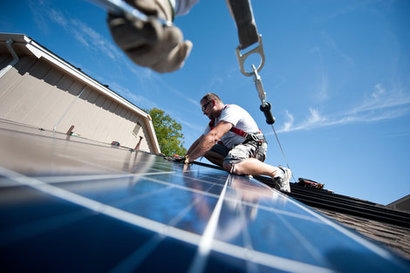
Speaking at a debate on renewable energy in the Scottish Parliament yesterday, the Minister for Just Transition, Employment and Fair Work, Richard Lochhead MSP, said that solar energy had “exciting potential.”
As he reminded his colleagues, solar was mentioned in the Bute House Agreement between the SNP and the Scottish Greens. It stated that the sector “power has an important role in continuing to decarbonise our heat and electricity supply” and promised to “actively enable” its growth.
Accordingly, solar energy is “going to have a much bigger, renewed focus in the forthcoming draft Energy Strategy that will be going out for consultation” Mr Lochhead said. “The debate is clearly a welcome vote of confidence in Scotland’s burgeoning solar sector, and the parliament was right in identifying the issues that are holding it back, such as obtaining connections to the grid. We look forward to continuing to work with the Scottish Government in driving the industry forward,” said Thomas McMillan, Chair of Solar Energy Scotland.
The pledge to collaborate chimes with the Scottish Government’s response to a letter from Solar Energy Scotland signed by a cross-party group of MSPs earlier this week. It called for a target of 4-6 gigawatts of solar capacity by 2030, a goal endorsed during the debate by Colin Smyth, Labour MSP for South Scotland. Adopting the target implies an approximately tenfold increase from the current capacity.
Former energy minister Fergus Ewing MSP, who was among the signatories to the letter, sought agreement from Lochhead that the consenting process needed to be sped up.
Conservative MSP for Central Scotland Graham Simpson agreed, saying he had “discussions with people at Glasgow airport, for example, who want to have quite a big solar farm but are frustrated by the planning system... We need to unblock such things.”
“To capitalise on the sunny prospectus that solar can provide Scotland, Scotland needs to be bolder, as other nations have been, and that includes setting a target for solar energy generation” added Stephanie Callaghan, SNP MSP for Uddingston and Bellshill.
She described solar as “the most democratised form of energy. It goes on the rooftops of homes and businesses and undoubtedly has strong potential to reduce fuel poverty with targeted deployment. Yet I would argue that solar is Scotland’s most underutilised renewable resource, despite being the cheapest energy source available to Scotland’s people, at a time of rapidly rising costs.”
Ms Callaghan said it offers a “unique opportunity” for expansion, seeing how Denmark generates five times more solar power, on a percentage basis than Scotland.
The debate was called by Paul McLennan, SNP MSP for East Lothian, in response to a report published last month by Scottish Renewables and the Fraser of Allander Institute. The Economic Impact of Scotland’s Renewable Energy Sector – 2022 Update underlined the vitality and potential of the sector, finding that it had a turnover of £3.06bn and employed the equivalent of 8,450 people in 2020.
In response to the letter, a spokesperson for the Scottish Government said it “recognises the importance of solar power in contributing to our net zero journey and we remain committed to continuing to work with the solar sector to provide a supportive policy framework to help it continue to grow and deployment. We have been working closely with industry in recent months to co-design our draft solar vision, which will be published for consultation in our Energy Strategy and Just Transition Plan.”
For additional information:

